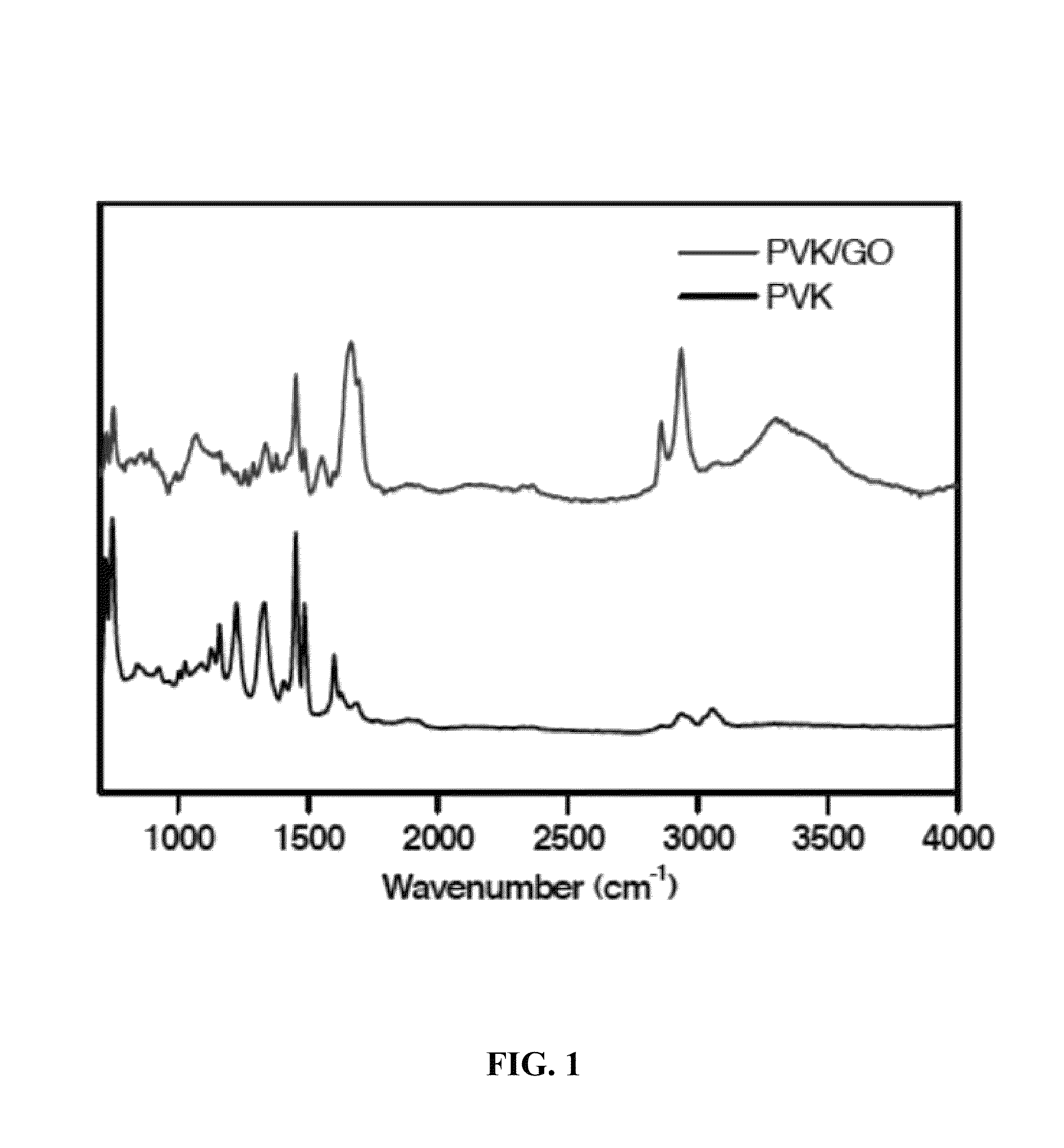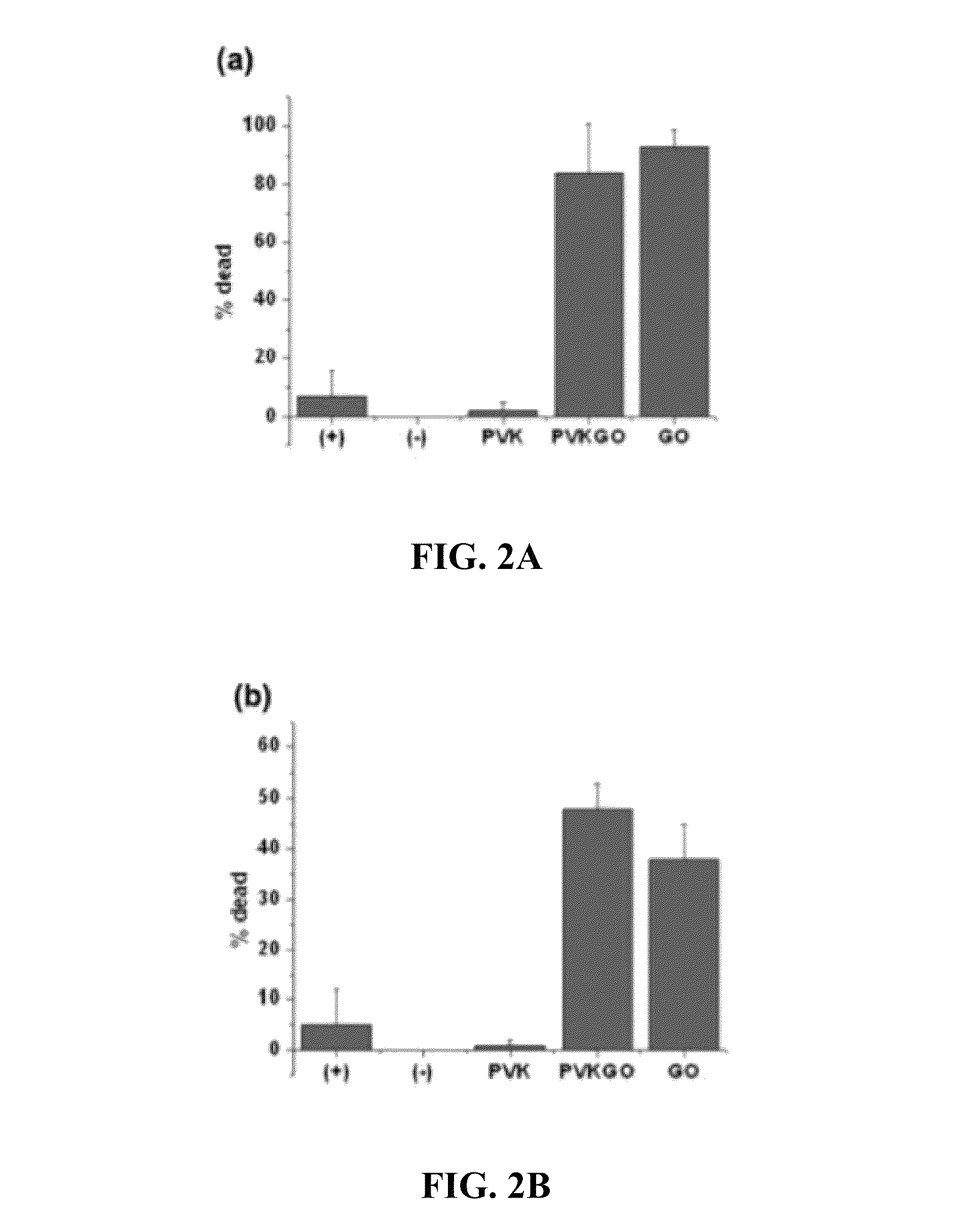Nanocomposite polymer-carbon based nanomaterial filters for the simultaneous removal of bacteria and heavy metals
a technology of nanomaterial filters and nanocomposite polymer-carbon, which is applied in the direction of filtration separation, membranes, separation processes, etc., can solve the problems of inactivation of microorganisms, filtering cannot simultaneously remove heavy metals, and other issues, to achieve the effect of reducing the number of contaminants
- Summary
- Abstract
- Description
- Claims
- Application Information
AI Technical Summary
Benefits of technology
Problems solved by technology
Method used
Image
Examples
example 1
[0081]The poly-N-vinyl carbazole (PVK) and graphite (−10 mesh, 99.9% metal basis) were purchased from Sigma Aldrich (USA) and Alfa Aesar, respectively. H2SO4, KMnO4 and HCl were obtained from Fisher Scientific. NaNO3 and NaOH were obtained respectively from Merck KGaA and Across. H2O2 was purchased from MACRON. All chemical reagents used were of analytical grade and used without further purification. All aqueous solutions were prepared using dionized (DI) water or Millipore water.
[0082]The PVK solution was prepared by dissolving 5 mg PVK powder in 1 mL CHP (1-cyclohexyl-2-pyrrolidone) solution. The solution was ultrasonicated for 6 hours and suspended in 5 mL Millipore water.
[0083]GO was prepared using the modified Hummers' method (Hummers and Offeman, 1958). Briefly, 3 g of graphite flakes was mixed with 3 g of NaNO3 by stirring, and then 138 mL of H2SO4 was added. The reaction was done in an ice bath for 30 min. After that, the mixture was further oxidized by adding 18 g of KMnO4 ...
PUM
| Property | Measurement | Unit |
|---|---|---|
| temperature | aaaaa | aaaaa |
| concentration | aaaaa | aaaaa |
| concentration | aaaaa | aaaaa |
Abstract
Description
Claims
Application Information
 Login to View More
Login to View More - R&D
- Intellectual Property
- Life Sciences
- Materials
- Tech Scout
- Unparalleled Data Quality
- Higher Quality Content
- 60% Fewer Hallucinations
Browse by: Latest US Patents, China's latest patents, Technical Efficacy Thesaurus, Application Domain, Technology Topic, Popular Technical Reports.
© 2025 PatSnap. All rights reserved.Legal|Privacy policy|Modern Slavery Act Transparency Statement|Sitemap|About US| Contact US: help@patsnap.com



